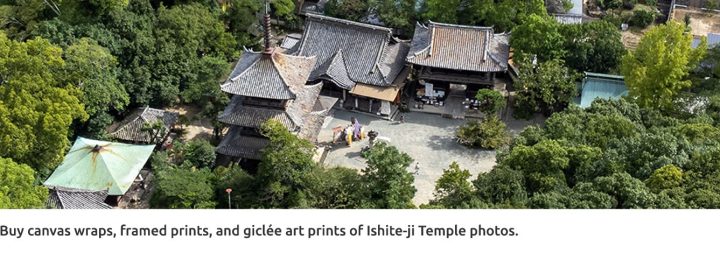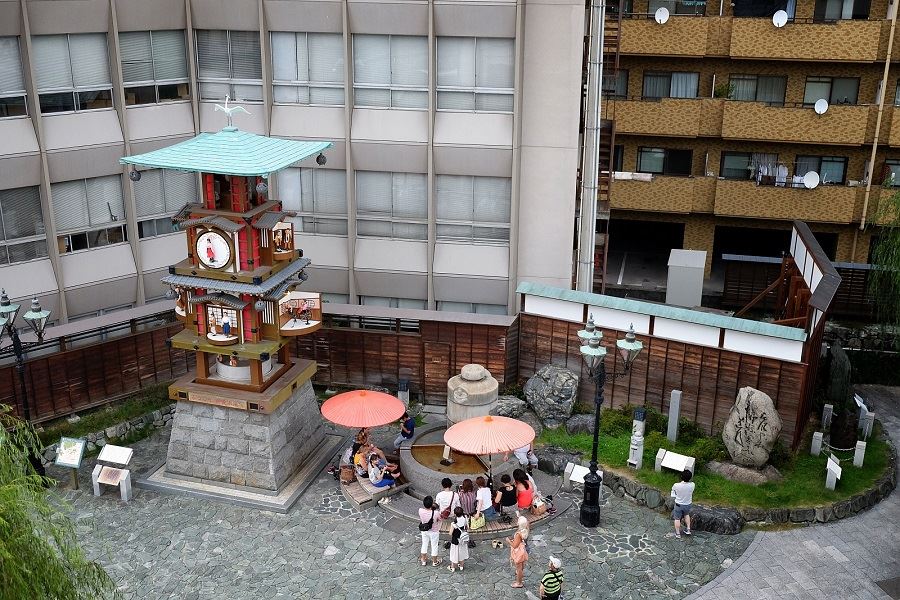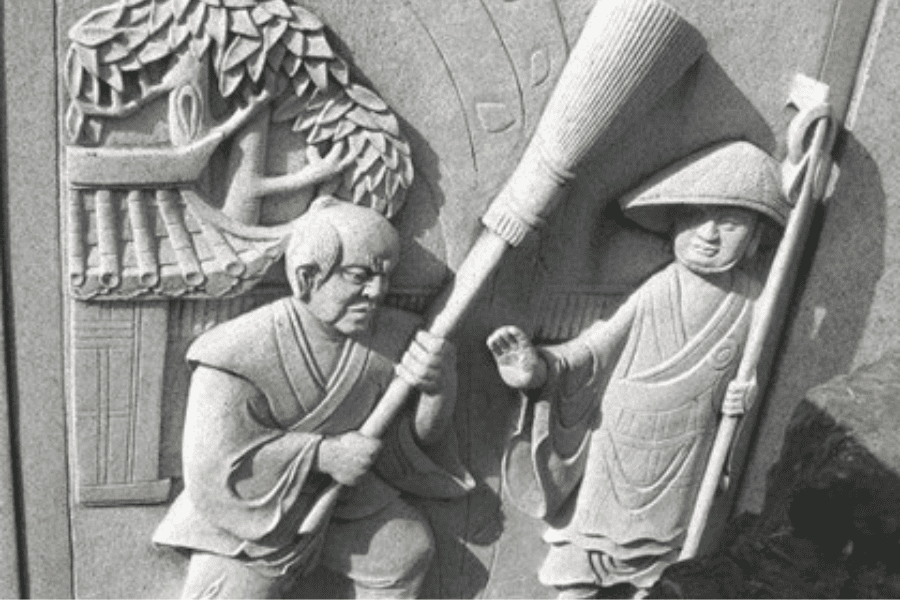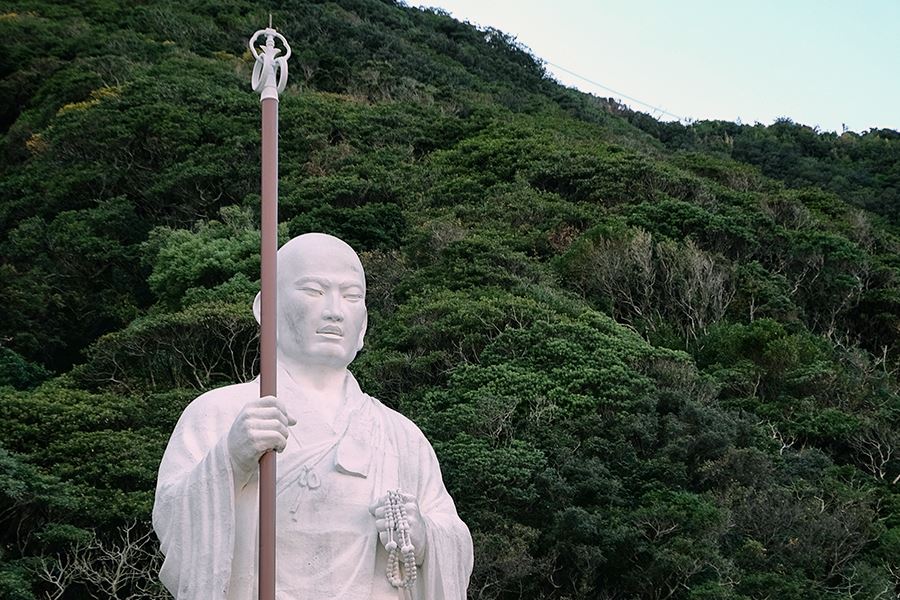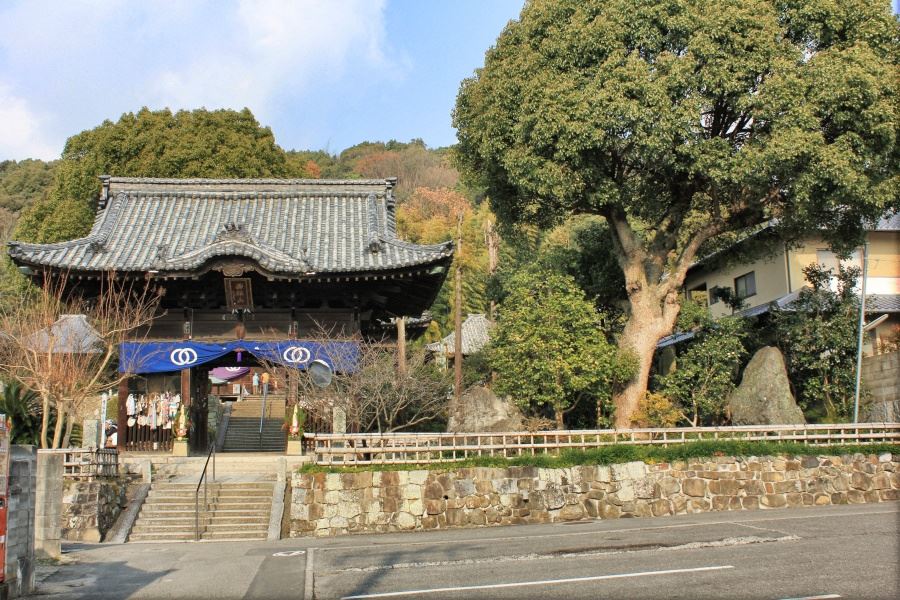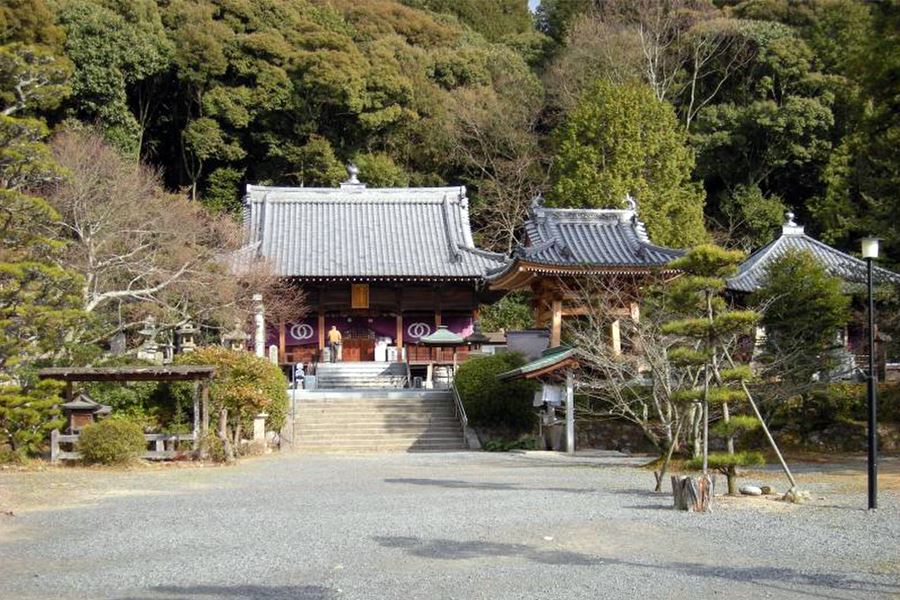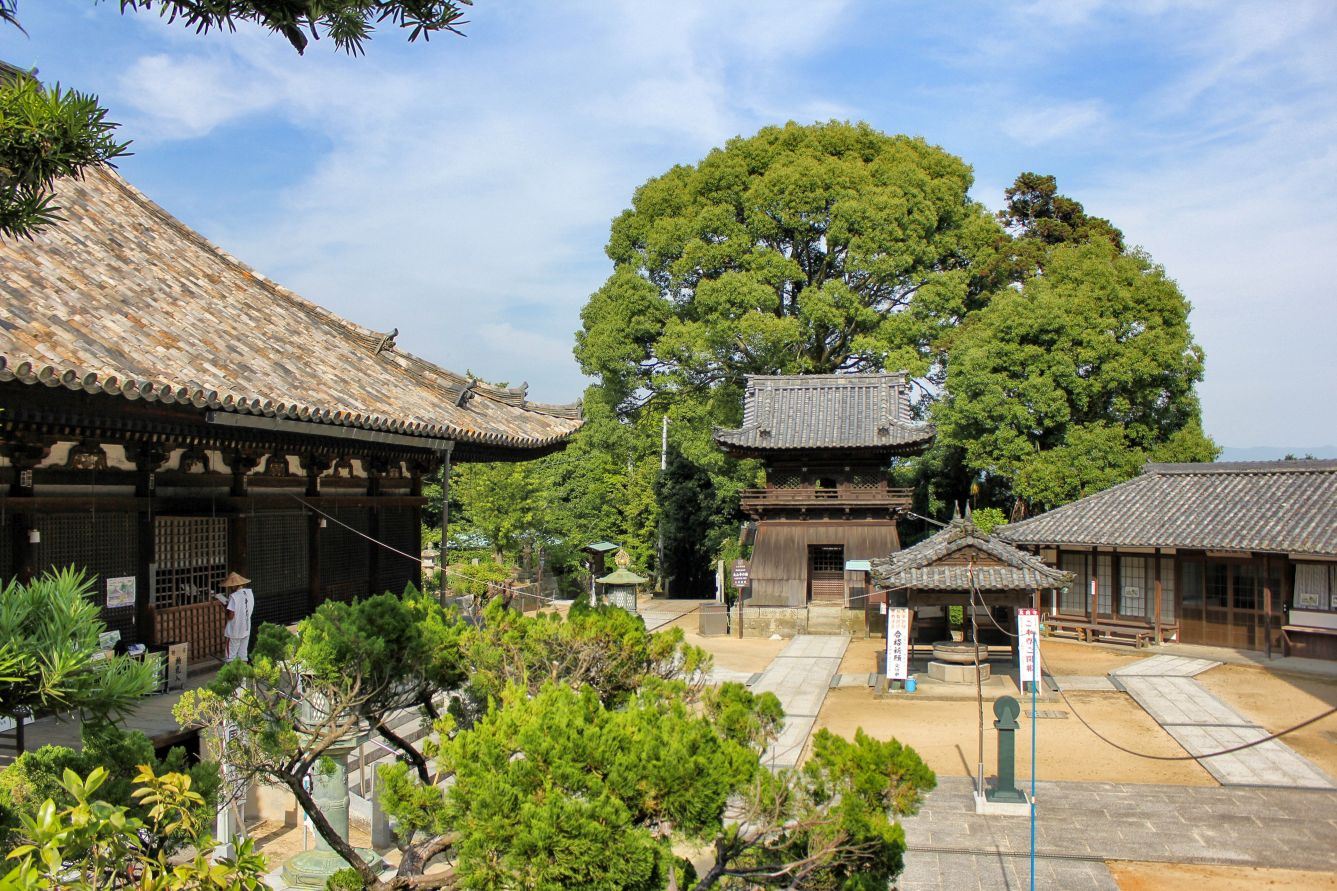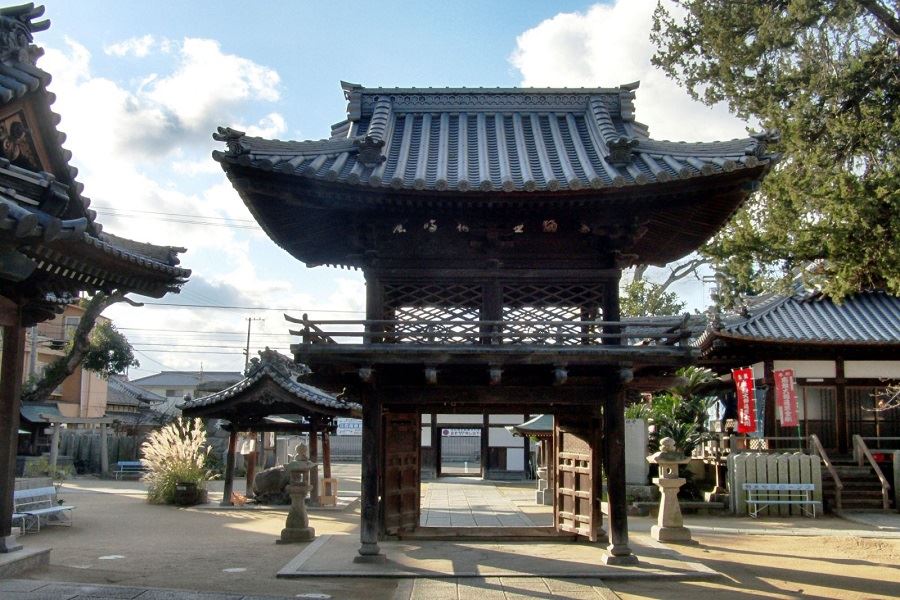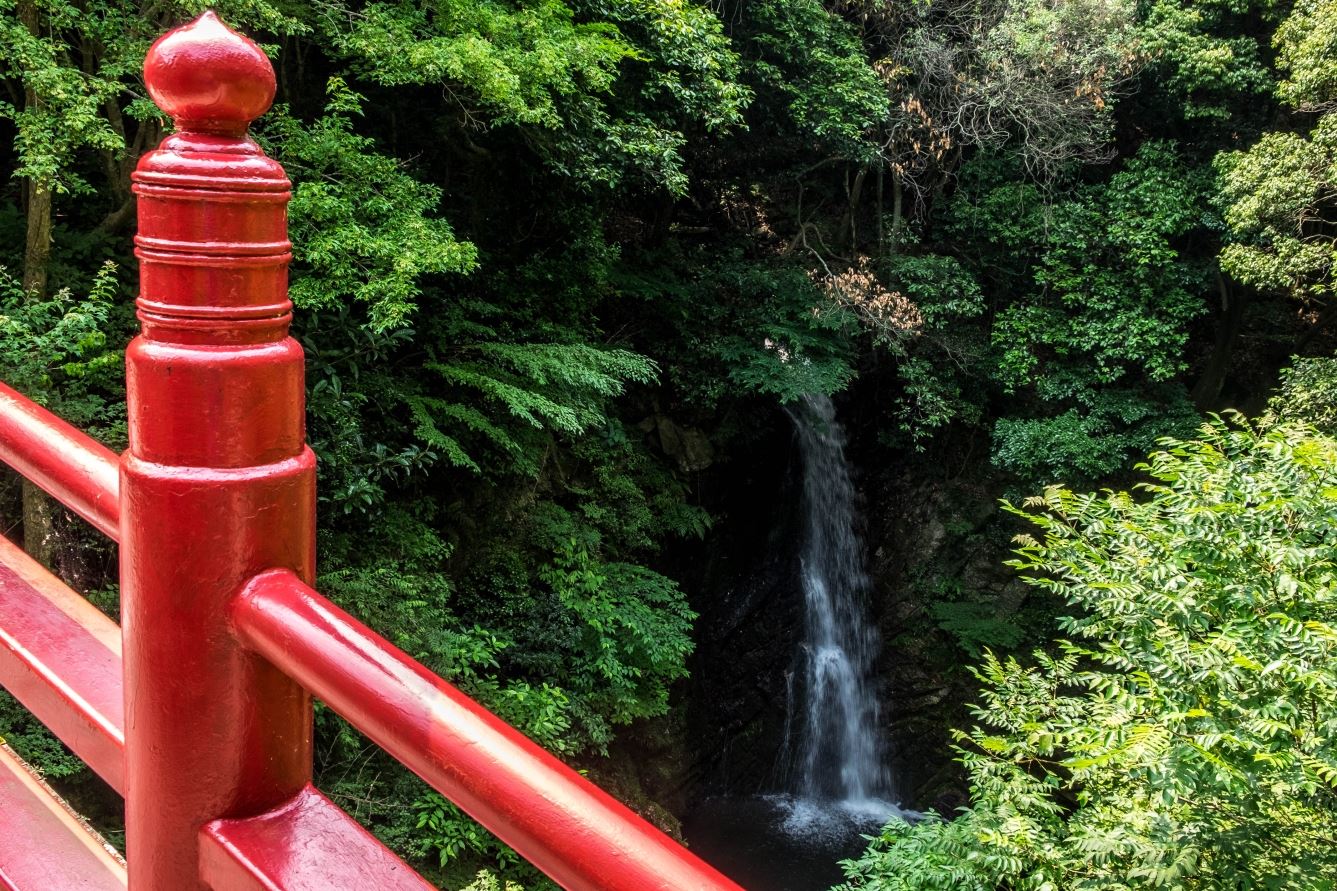Temple 51, Ishite-ji
Home » Temple 51, Ishite-ji
Temple 51, Ishite-ji
Ishite-ji is temple No. 51 on the Shikoku pilgrimage, or Henro. It’s situated in Matsuyama, not far from Dōgo Onsen, so it’s as popular with tourists as with pilgrims. In 2009, it was given one star in the Michelin Guide. Ishite-ji excites both amazement and revulsion. Some find it appealing in its eclectic zaniness, others wish it could be tidied up to reflect its historic and religious importance.
What to see
There’s lots to see at Ishite-ji, so allow an hour or so.
The entrance to the temple is a stone bridge over a stream. A large tree shades statues of a rampant dragon, Emon Saburō on his knees, a Kannon-like figure, and Kūkai. There’s also a stone washbasin. From here the approach enters an unusual, covered mall with souvenir shops. The little snacks sold here are very tasty.
The large Niō Gate hung with giant straw sandals is a national treasure. Through the gate and to the left is a belfry, and an Amida Hall. The Ehime Pagoda is a large brick building that enshrines the war dead in Burma. Beyond this is the Shaka Hall, and built on the hillside above this is the Kannon Hall, a wooden gabled building on concrete stilts.
To the right after the main gate is a covered incense burner. The building in front of which it stands could be mistaken for the main hall, but it’s called the Tea Hall. It houses a statue of Kūkai that’s so secret, even the priest never sees it. To the side of the Tea Hall is another belfry of ‘hakama’ construction, where the base flares out towards the bottom. The three-storied pagoda is an important cultural property. Around its base are bags of soil from the 88 temples. By touching them, you can accrue as much merit as if you visited them (maybe).
Behind the pagoda are three buildings in a row. From the top, the Issaikyō Hall houses a rotating cabinet for sutras, the Goma Hall houses a statue of Fudō Myōō, and in the Miroku Hall is a framed picture of Chisokuten, the realm where future Buddhas reside.
Behind the Miroku Hall is the Suiten Hall containing a jar that supposedly tells the tides of the sea. In front of it there’s a pond with a shrine to Benzaiten. Through the Chūjaku Gate is a Treasure Museum with artefacts from the Anyō-ji period. You can also see Emon Saburō’s legendary stone. It’s rather too big to be held by a baby, and it’s said to be growing slowly in size. Behind the museum is the priest’s quarters and a garden featuring scenes of the Buddha’s life in terracotta friezes from Southeast Asia. The Grand Auditorium has a statues of Manju, Fudō Myōō, Bishamonten, and the Buddha.
In the new Buddha Research Center, Buddha statues are on display. There’s also a small dark tunnel where you can enjoy intense disorientation. Just beyond this facility outside the temple is a huge new set of stone statues.
The main hall is located directly ahead of the main gate. It enshrines a sitting statue of Yakushi Nyorai. Next to the main hall is the Ema Hall, behind which is the Ema Hall, a shrine to the deities of the twelve Kumano shrines. The Daishi Hall is next to this. In the Daishi Hall is a statue of Kūkai and a stone hand that you can rub on parts of you that are painful. In the past, graffiti of many cultural figures such as Masaoka Shiki and Sōseki Natsume was written on the back wall, so it was also called the Graffiti Hall, but the wall was repainted during World War II. Even now, you can scribble something if you feel the need.
Beside the Daishi Hall is the Kariteimo Hall, enshrining the deity of maternal virtue. Although it’s called a hall, it’s just a shrine. It’s customary for pregnant women to take a stone from the temple, and if they give birth safely, they return two stones.
Behind the temple is an intriguing but shabby system of tunnels built in the 1980s. One tunnel leads to the inner sanctuary, a separate temple with a large statue of an emaciated Buddha meditating. The other takes you to another part of the temple via a bizarre subterranean shrine. On the hill above these tunnels are two ancient stone tombs (kofun) that you can enter if you can find them.
On the hillside northeast of Ishite-ji stands a huge statue of Kūkai, holding a brush to commemorate his skill as a calligrapher. His head faces towards India where Buddhism originated, while his body faces China where Kūkai studied esoteric Buddhism.
Several crests can be seen in the temple, but the main crest of three wavy bars in a hexagon is the crest of the local Kōno clan.
History
In 728, the governor of Iyo Province, Ochi Tamazumi enshrined the deities of the twelve Kumano shrines here. It became the place of imperial prayer of Emperor Shōmu, and in 729, Gyōki carved a statue of Yakushi Nyorai and enshrined it as the principal image of the temple. The name of the temple at the time of its foundation was Anyō-ji, and the sect was the Hossō sect, but Kūkai visited the temple in 813 and changed it to the Shingon sect. In 892 the first son of the feudal lord, Kōno Okitoshi, was born holding a stone on which was written “Emon Saburō reborn”. The name of the temple was changed to reflect this.
The temple flourished from the Heian to the Muromachi period under the patronage of the Kōno clan and many monks lived here. The pagoda was rebuilt in 1073 while the main hall was built in 1114. The Niō guardians date from 1240, and the main gate from 1318. Most of the buildings were burnt by Chōsokabe Motochika in 1566, but the main hall, Niō Gate, and three-storied pagoda survived.
Legends
The founder of the temple, Ochi Tamazumi, was informed in a dream that this was a sacred place.
The story of Emon Saburō and his reincarnation at the temple is told here.
Information
Name in Japanese: 石手寺
Pronunciation: ishiteji
Address: 2-9-21 Ishite, Matsuyama, Ehime 790-0852
Related Tours

Experience the most beautiful and interesting temples of the Shikoku Pilgrimage in seven days.

A tour for families or friends, staying in the most characterful kominka and ryokan of Shikoku.

Visit the most beautiful and interesting temples of the Shikoku Pilgrimage and walk the toughest trails.
